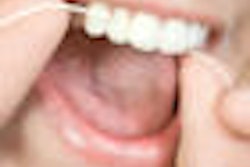The American Academy of Periodontology (AAP) this week released guidelines calling on doctors and dentists to pay more attention to the relationship between periodontitis and atherosclerosis.
As a result of the guidelines, cardiologists may begin examining their patients' mouths and periodontists may begin asking questions about heart health and family history of heart disease.
The guidelines were developed in conjunction with the American Journal of Cardiology and are being published concurrently in the online versions of that journal and the Journal of Periodontology, the official publication of the AAP.
Specific clinical recommendations include the following:
Patients with periodontitis who have a known major atherosclerotic cardiovascular disease (CVD) risk factor, such as smoking, immediate family history of CVD, or history of dyslipidemia, should consider a medical evaluation if they have not had one within the past 12 months.
A periodontal evaluation should be considered in patients with atherosclerotic CVD who have signs or symptoms of gingival disease, significant tooth loss, and unexplained elevation of highly sensitivity C-reactive protein (hs-CRP) or other inflammatory biomarkers.
A periodontal evaluation of patients with atherosclerotic CVD should include a comprehensive exam of periodontal tissues, as assessed by visual signs of inflammation and bleeding on probing; loss of connective tissue attachment detected by periodontal probing measurements; and bone loss assessed radiographically. If patients have untreated or uncontrolled periodontitis, they should be treated with a focus on reducing and controlling the bacterial accumulations and eliminating inflammation.
When periodontitis is newly diagnosed in patients with atherosclerotic CVD, periodontists and physicians managing patients' CVD should closely collaborate to optimize CVD risk reduction and periodontal care.
The clinical recommendations were developed at a meeting held in early 2009. The consensus paper also summarizes the scientific evidence that links periodontal disease and cardiovascular disease, and explains the underlying biologic and inflammatory mechanisms that may be the basis for the connection.
"Both periodontal disease and cardiovascular disease are inflammatory diseases, and inflammation is the common mechanism that connects them," said David Cochran, D.D.S., Ph.D., AAP president and chair of the department of periodontics at the University of Texas Health Science Center at San Antonio, in a press release. "The clinical recommendations included in the consensus paper will help periodontists and cardiologists control the inflammatory burden in the body as a result of gum disease or heart disease, thereby helping to reduce further disease progression, and ultimately to improve our patients' overall health. That is our common goal."
Copyright © 2009 DrBicuspid.com



















